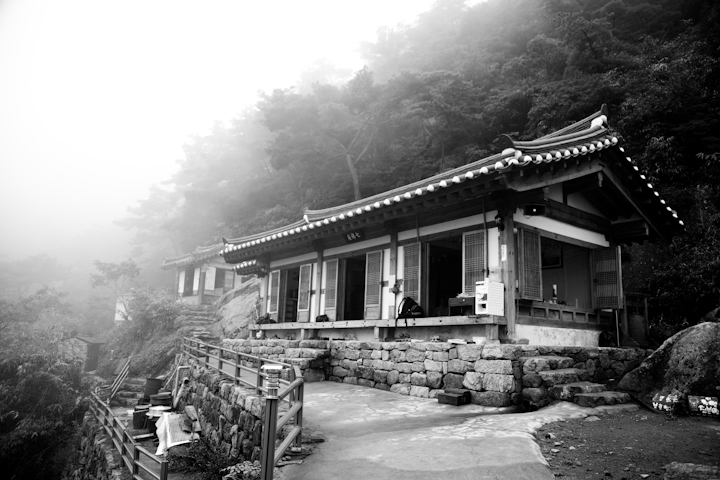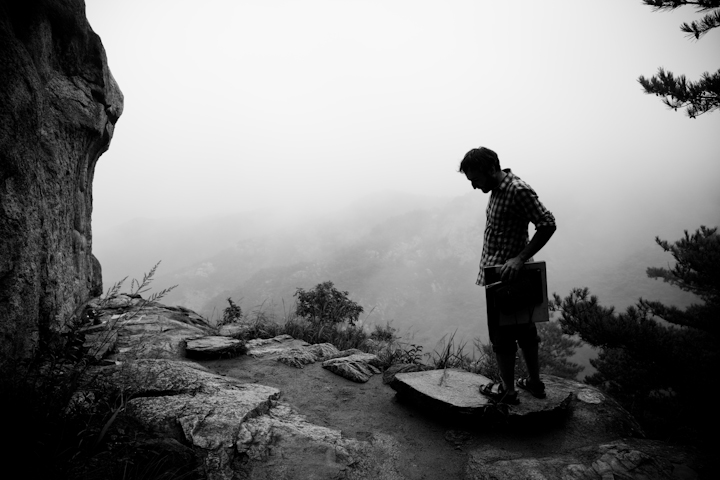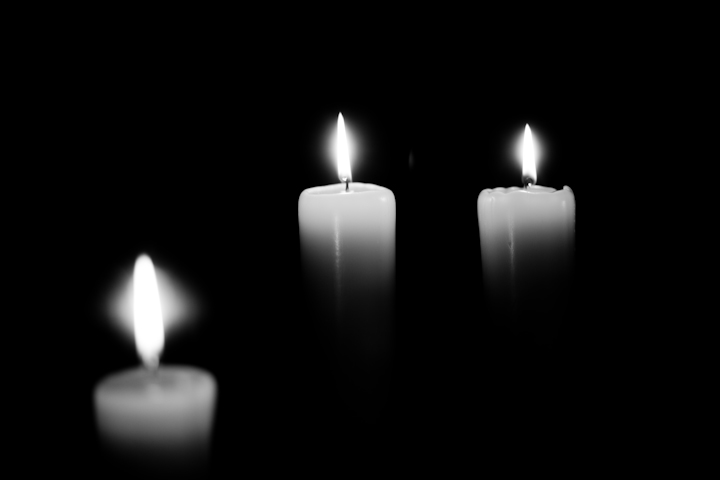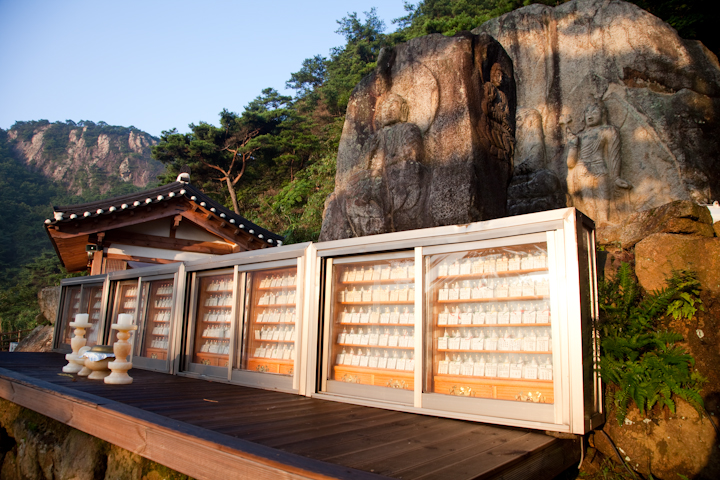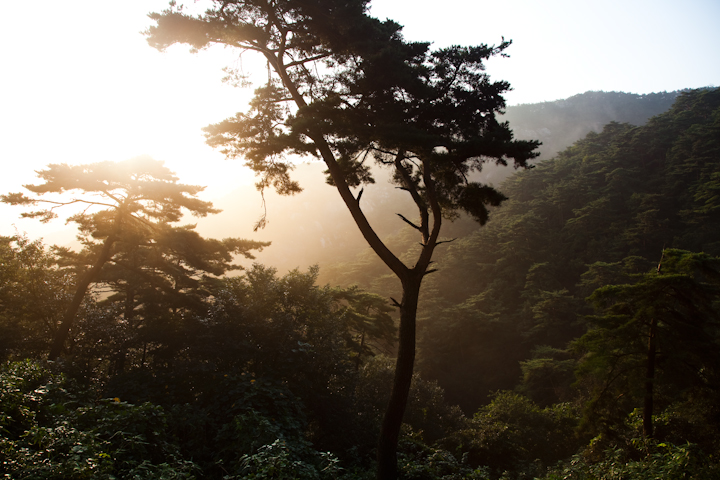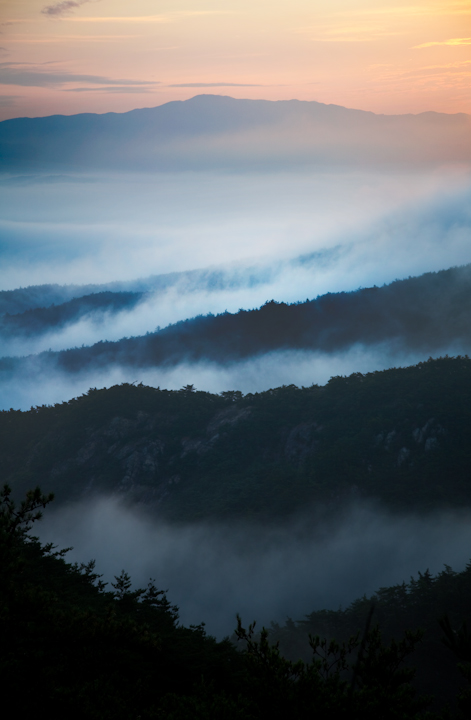Chuseok weekend came quickly and I had some ideas about what I wanted to do but nothing planned. Aaron and I woke up around 10 and decided to head to Gyeongju the ancient capital city of South Korea. I had been there before during Buddha’s birthday and knew it was beautiful and worthy of visiting again.
We took the KTX and caught a bus from the station to down town Gyeongju. Since we arrived late, we only had a few hours to explore the city. We stayed the night at Hanjin Hostel with the expectations of finding a place in the mountains to camp the next day. I figured the man who ran the hostel could inform us of a place to camp. He had lived in Gyeongju all of his life and spoke perfect English. He had a certain air about him, like he knew and appreciated what was going on in life.
I quickly inquired about camping and he informed me that there was no place to camp in the area. Camping is quite regulated in Korea like most things and since Gyengyu has so much historical importance, it makes sense they don’t allow camping within its limits. So I asked him if there was anyway we could stay in the mountains. Being in the city for so long, you start to feel a sense of nature deprivation. I was craving something that was not man made or concrete.
He then told us we could stay at a hermitage temple on Namsan Mountain and that the hike to the hermitage would take three hours. He gave us a map with various trails on the mountain labeled in Korean. I was instantly excited, but once I looked at the map, I was a little uncertain about how we were going to find the hermitage. He said there is a Buddhist nun living there who speaks English and we could ask her if we can spend the night once we found the hermitage.
The next day we woke up early and took a bus to the closest stop in the direction of the mountain’s base. We then hiked on the side of the road for about two miles until the road became a dirt road and then eventually there was no road.
From the base of the mountain we saw a few people heading down the trail. We inquired about the distance to the hermitage and if it did in fact exist. Before receiving some confirmation from a young Korean woman and seeing the first trail marker I started to feel a little apprehensive. By the time we would reach the top of the mountain it would be getting dark. We didn’t exactly know if we would have a place to stay, and didn’t have any food or water.
The last 100 meters was the hardest. We had to climb a very steep set of stairs but once at the top we were surrounded by a beautiful view of the forest, thousand year old Buddhist statues and the hermitage temple nestled in the mountaintop. I was gasping for air and looking around when a Buddhist nun stepped out of the hermitage’s doors and asked it we wanted tea. She had a huge smile on her face and a very warm presence about her. I eagerly accepted her offer.
Aaron and I took off our shoes and sat on the floor with her and two other Buddhist monks. I asked what her name was and how long she had been living at the hermitage. Ye Kin Sunim had lived at the hermitage for 3 and half years. She lives completely alone except, for occasional visitors who stay at the temple.
As we sat together, legs crossed, savoring the tea in our tiny porcelain cups a sense of calmness came over me. The place had an otherworldly sense about it. I felt as if we had left Korea, or what I knew to be Korea. A fast paced, competitive country, with neon lights everywhere. People coming and going, preoccupied with the nuances of their life and the gravity of their occupations. These images dissipated. This place was something different.
As we drank tea I asked, if we could stay the night. Luckily she said we were welcome to stay at the hermitage, but it’s best for people to call to inform her in advance.
We had time to hike to the very top of the mountain before dinner and meditation practice. There is a thousand year old Buddha carved into the side of a cliff at the very top. It is only a few meters from the hermitage, but getting to the Buddha was a little challenging. The hike is steep and once at the top you have to grasp a pull rope on the edge of the cliff to maneuver yourself to the other side. It looks scary, but it’s actually quite easy.
Dinner commenced by the sound of a gong. We sat down with three other Korean women who were staying at the hermitage and ate an assortment of bean spouts, kimchi and rice. During dinner Ye Kin Sunim told us the schedule for the following morning and evening. We would begin mediation practice after dinner and again at 4 am.
We sat down to begin meditation around 7 pm. Before beginning Ye Kin Sunim showed us how to bow and how Korean Buddhists do sitting meditation. The practice started with a sequence of bowing. Next there was a series of chanting that was impossible to recite without a lot of practice, but we gave our best effort.
The actual meditation started when Ye Kin Sunim hit a wooden stick on the floor three times. The lights went off. Now we were completely in tune with the sounds of the forest and incessant chattering of our own minds. I have practiced meditation for about a year now and it has been an important tool. I deeply admire people, like Ye Kin Sunim, who have dedicated their lives to this practice and understanding the nature of existence. Learning to simply observe ones mind and remember to come back to the breath, to be present in this moment instead of lost in thought, is not a simple task.
After meditation we prepared a space on the floor to sleep with some blankets and mats. When the gong rang the following morning at 4 am, I actually didn’t feel tired or drowsy. Mostly, it was refreshing to wake up and be in the mountains. We repeated the same meditation practice from the night before. I found it easier to focus on my breath this time. My mind didn’t drift off as much and indulge in whatever thoughts that arose.
It was still dark when meditation ended but the sky was beginning to lighten in tone. I noticed there was a man praying in front of the Buddha statues who didn’t stay the night. I later found out he started hiking up the mountain at 2 am to pray with the Buddha as the sun rose. Aaron and I carefully walked around Chilburam trying not to disturb the people chanting in front of the Buddha. We followed the path back to the top of the mountain to watch the sunrise. The mountains were covered with mist that flowed through the valley. We sat and watched the sun gradually rise and the fog circle around the mountain’s peaks, disappearing as it flowed down the valley. The movement reminded me of the meditation practice, how you can’t hold on to anything. Just watch as things rise and fall and learn to let go.
